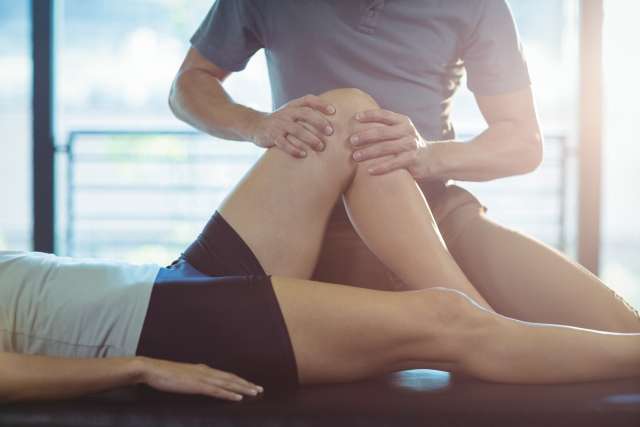Dear Doctors: I started using the rowing machine at our gym a few months ago. It's a good workout, but the outside of my left hip has started to ache. A friend says he experienced the same thing, and it was bursitis. What is bursitis? What can you do to make it go away?
Dear Reader: Bursitis is a painful condition that occurs when one or more of the small, fluid-filled sacs that help protect the joints become irritated or inflamed.
Known as bursae (the singular is bursa), these tiny cushions are made up of a thin membrane that secretes a slick, jellylike substance. Bursae help the structures of the joints -- including bone, cartilage and connective tissues -- glide over and around each other with minimal friction. The sites in the body where someone will often develop bursitis are the elbow, knee, shoulder and hip. The most common causes are overuse of the joint or physical injury. Infection can also cause bursitis.
With bursitis of the hip, two major bursae are typically involved. One is located at the inner part of the hip, near the groin area. This is the iliopsoas bursa. More often, it is the bursa located at the outside of the hip, near the bony point known as the greater trochanter, that becomes inflamed. This is called trochanteric bursitis. The main symptom is the hip pain that you described. It can sometimes extend beyond the hip to the outer part of the thigh.
Bursitis pain may start out sharp and quite pronounced, then gradually change into a more widespread and persistent ache. Hip bursitis is often worse at night, when lying down puts added pressure on the pelvic area. Rising from a chair or from a squat, climbing stairs or walking a long distance can also trigger the pain.
Diagnosis begins with a physical exam, and it may also involve imaging tests. When infection is suspected as the cause, fluid will be collected from the bursa and sent to a lab for testing.
Treatment focuses on taking steps to ease inflammation. This begins with rest. It is important for the individual to take a break from the activity associated with their case of bursitis. Over-the-counter pain and anti-inflammatory medications, such as aspirin and ibuprofen, are helpful in reducing swelling and managing pain. When necessary, more powerful anti-inflammatories may be prescribed. Ice compresses, applied every four to six hours for about 20 minutes at a time, can also ease pain and swelling. It is possible, but not common, that it becomes necessary to drain the excess fluid from the bursa. If infection plays a role, that fluid is sent to a lab for analysis.
The good news is that bursitis often resolves over the course of a few weeks. A gentle stretching program, along with some easy strengthening exercises, can aid recovery. When pain persists, a doctor may prescribe a cortisone injection into the site. Cortisone usually offers quick relief from pain and inflammation.
If rest and anti-inflammatories don't help, it's a good idea to check in with your health care provider.
(Send your questions to [email protected], or write: Ask the Doctors, c/o UCLA Health Sciences Media Relations, 10960 Wilshire Blvd., Suite 1955, Los Angeles, CA, 90024. Owing to the volume of mail, personal replies cannot be provided.)





